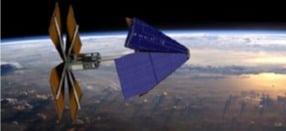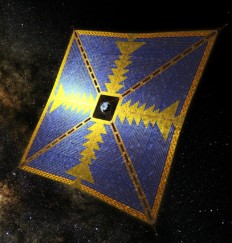Spacecraft Power Generation, Simplified.
Achieve lighter space vehicles capable of venturing further, with more power and lower mission costs.
Ascent Space Hardware Developer Kits
The Space Hardware Developer Kits (HDKs) package Ascent's space-grade thin-film solar technologies and proven design expertise, matured in collaborations with NASA and JAXA, into easy to consume HDKs created to simplify space mission power design and vehicle integration, accelerate mission schedules and boost spacecraft performance while delivering significant mass efficiencies.
By leveraging the Space HDK foundations, your team will be able to quickly focus on optimizing to the nature and scale of the spacecraft and mission, and avoid the lead time, costs and complexity of bespoke power generation solutions.
-
Space Flight Heritage
Unrivaled specific power and cell longevity on-orbit. Flown successfully with Momentus and encapsulated in space-rated laminate demonstrated on orbit with NASA.
-
Plug & Fly Solar Integration
The space photovoltaic platform engineered to easily interface with proprietary and COTS components, systems, subsystems, and buses.
-
Modular Mission-Enabler
Optimized for LEO-GEO; Cislunar & Deep Space capable. Configurable to mission power, mass, and delta-v budget requirements.
-
The Sustainable Space Solar Solution
ASTI’s robust arrays reliably provide power, even if impacted by micrometeoroid or orbital debris (without creating more space debris).
-
Assured Delivery Sooner
Solar cells produced in-house at Ascent, backed by MW of proven production capacity.
HDK Lineup
Cubesat HDK
The power to do more with less
28V .5U & 1U optimized cells, body mountable & folding arrays in 1U, 3U, & 6U heights
Engineered to be widely adaptable for cubesat power systems.
EP-500V HDK
The power of efficiency
500V ESPA & ESPA Grande footprint folding flatpack arrays
Engineered to increase electric propulsion performance while decreasing power system mass.
Smallsat HDK
The power to deliver at scale
28V ESPA & ESPA Grande optimized flatpack folding arrays
Flatpack design enables more payloads per launch.
Coming Soon
EP-1kV HDK
The power of enhanced propulsion performance
1,000V Advanced electric propulsion optimized solar arrays
Engineered to push the boundaries of electric propulsion thrust to weight ratios.
Flatpack Rollable HDK
The power of flexibility
28V, 500V, & 1kV rollable solar arrays tailorable to the mission, spacecraft, and launch vehicle
Engineered to minimize both spacecraft and launch costs as well as time to operating on orbit.
xkW HDK
The power of magnitudes of more power
28V, 500V, & 1kV space arrays generating kilowatts of power
Engineered to enable large-scale space infrastructure.
Space Flight Heritage
Materials International Space Station Experiment (MISSE-10)
Exploring material options NASA Lightweight Integrated Solar Array & anTenna (LISA-T)

Ascent's thin-film modules were selected for advanced testing and experiment on the International Space Station (ISS) by NASA's Marshall Space Flight Center.
After over a year aboard the ISS, Ascent's PV technology over-performed NASA's predictions and the competition. With the success of the MISSE-10 experiment and Ascent's TRL 7 readiness, NASA's LISA-T is scheduled for launch in 2023 and will include Ascent's thin film solar modules for demonstration.
Learn more here:
Enhanced Antenna-Hosted Solar Power Generation Module Development
Reimagining arrays to encompass more than photovoltaics for future space missions

By re-imagining the role of arrays, Ascent provided innovative solutions to challenges faced by the Japan Aerospace Exploration Agency (JAXA) for upcoming deep space missions. This technology maturation demonstrated Ascent's unique ability to design combined arrays to accommodate advanced payloads, sensors and PV.
These advancements further bolster the capabilities of Ascent's lightweight, flexible, durable, temperature & radiation resistant modules, proving them to be the perfect space PV solution for an increasingly vast and dynamic range of missions and operators.
